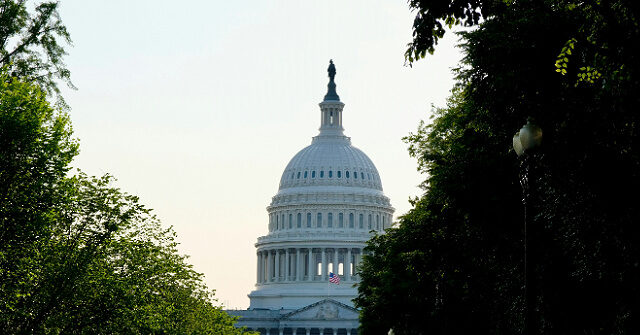In a high-stakes move just hours before a crucial vote, House leaders unveiled a lengthy 1,547-page continuing resolution (CR) aimed at preventing a government shutdown. This bill, packed with substantial additional funding—potentially amounting to tens of billions of dollars—was released on the House website late Tuesday night. The urgency of the situation triggered a flurry of activity among congressional staff, media, and lobbyists, all of whom rushed to dissect the bill’s extensive details. Speaker Mike Johnson, facing pressure from various factions within the Republican Party, stopped short of committing to the 72-hour rule, which was previously implemented to provide lawmakers with ample time to review legislation before casting their votes.
Frustration brewed among Republican members for being excluded from the negotiation process, as many were still processing the content of the extensive bill. There was uncertainty regarding whether a majority of House Republicans would support the proposed legislation. Representative Michael Cloud (R-TX) voiced his discontent on social media, criticizing Congress for once again pushing through a lengthy bill at the last minute instead of negotiating a straightforward government funding solution. He lamented that the legislative process operated away from public scrutiny, fostering a lack of transparency.
Despite an attempt to promote the bill during a closed-door meeting with the House Republican Conference, Speaker Johnson faced backlash from many members across the party spectrum. Lawmakers expressed their dissatisfaction with both the negotiation process and the timeline leading up to the bill’s introduction. The overwhelming sentiment among some prominent Republican members, including influential committee chairs, was that the negotiations had been poorly handled, leading to a final product that did not align with their expectations.
Among the critical voices was Rep. Marjorie Taylor Greene (R-GA), who characterized the CR as more than just a straightforward continuation of budgetary amounts. She argued that it was evolving into an “omnibus” package, a type of legislation that consolidates all twelve appropriations bills and significantly enhances spending levels. This perspective was echoed by Rep. Jason Smith (R-MO), chair of the Ways and Means Committee, signaling a broader concern among Republicans that the bill would not uphold the spending principles they had supported.
In previous statements, Johnson had pledged that no Christmas omnibus would be enacted, yet the current CR appeared to contradict that promise, adding fuel to the fire of discontent among lawmakers. While the bill allows for the continuation of current spending levels, the accompanying provisions could garner bipartisan criticism for being excessive and potentially fiscally irresponsible. This ongoing debate highlighted the growing divide within the Republican Party, reflecting a struggle between adhering to traditional principles of government funding and accommodating a more expansive approach to spending.
If the proposed CR secures approval, the timeline for passing the necessary spending legislation for the remainder of the fiscal year would extend to March 14, 2025. This extension would provide lawmakers with additional time to negotiate and finalize appropriations but at the cost of the contentious atmosphere surrounding the current legislation. As the political landscape charged ahead, the implications of this CR and the reactions it elicited from within the party raised foundational questions about Republican unity and the future direction of government funding initiatives.

